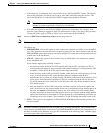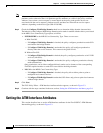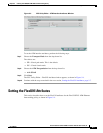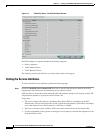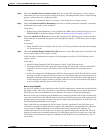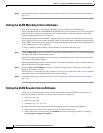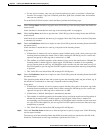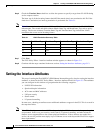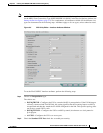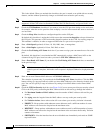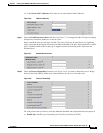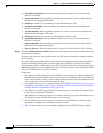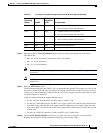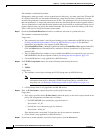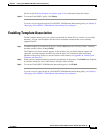
5-13
Cisco IP Solution Center L2VPN and Carrier Ethernet User Guide, 6.0
OL-21636-01
Chapter 5 Creating a FlexUNI/EVC ATM-Ethernet Interworking Policy
Setting the Interface Attributes
Note Attributes available in the Interface Attributes window dynamically change based on the choice made
for the MPLS Core Connectivity Type (PSEUDOWIRE or LOCAL) in the Service Options window (see
Setting the Service Options, page 5-4). For completeness, all attributes available for the different core
types are documented in the following steps. Attributes apply to all core types, unless otherwise noted.
Figure 5-5 EVC Policy Editor - Interface Attributes Window
To set the FlexUNI/EVC interface attributes, perform the following steps.
Step 1 Choose an Encapsulation type.
The choices are:
• DOT1QTRUNK—Configures the UNI as a trunk with 802.1q encapsulation. If the UNI belongs to
a directly connected and FlexUNI link, this setting signifies that the incoming frames are 802.1q
encapsulated and that they match the VLAN ID configured for the link. This specific topology does
not involve a trunk UNI as such.
• DOT1QTUNNEL—Configures the UNI as an 802.1q tunnel (also known as a dot1q tunnel or
Q-in-Q) port.
• ACCESS—Configures the UNI as an access port.
Step 2 Check the Standard UNI Port check box to enable port security.



